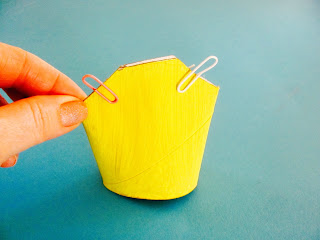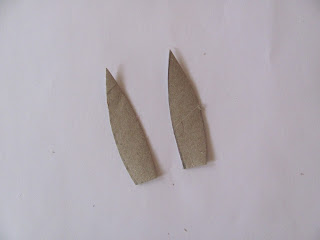What can I say about Brian? He was the first cardboard tube animal I made with my daughter, and I've always had a soft spot for him. He really kicked off the whole Zoo and Farm craft journey, so I couldn't be happier he now has his very own picture book.
'Brian the Lion goes into Space' is a colourful, wacky space adventure, with some fun twists and turns along the way.. There are lots of little beardy blue gnomes, rainbow food, oh, and a friendly dragon called Norris..
 |
| The gnomes want to read Brian's new book! |
The book combines storytelling and craft, as Brian's world is made out of cardboard (of course)..
All the picture scenes in the book are created from ordinary packaging like egg cartons, tubes and cereal boxes. Plenty of familiar things for kids to spot, and hopefully it'll inspire some making too! The book is available on Amazon.
I have shared a Brian project before, quite a long time ago now.. so, in honour of his first book, I've updated it here.
You will need:
Toilet paper tube (or kitchen paper roll)
Cereal box card
A cup/beaker and egg cup/spice jar or similar, to draw around
Craft glue
Scissors
Ruler
Pencil
Yellow and Brown paint (mix a little red with yellow and a dab of blue)
Black felt-tip or gel pen
Paper clips
1. Paint the tube and some cereal box card yellow (enough for the face, tail and paws) and paint another piece of card brown (enough for the mane).
Painting first can speed up the making (if your mini maker doesn't mind a short wait at the start..), but in MYOZ we got stuck in straight away, cutting and gluing the body first, and then painting, which is fine too!
2. When the paint is dry, cut the tube so it's about 8cm high. An easy way to do this is to use a ruler to mark 8cm on the side, then squeeze the tube flat, near the mark, and cut across, cutting through the mark (younger ones might need some help cutting through the double card).
3. Squeeze the top part of your tube together again, and give Brian some shoulders by snipping little triangles off the sides. Don't take too much off.
4. Brush some glue all along the inside edges of the end you've just cut. Don't overload with glue or it will ooze out everywhere when you squeeze the glued sides together.
Use two paper clips to keep the sides together while the glue dries.
5. Time to make Brian's head. On the brown card, use a pencil to draw around a big circle, like the top of a cup or beaker - and draw around a small circle, like an egg cup or spice jar on the yellow card. Carefully cut these out. (slowly turn the card circle towards you as you cut, rather than moving or turning the scissors.)
6. Place the smaller yellow circle in the middle of the brown one, and when you're happy, lightly draw around it and put aside.
(*see tip below for younger makers)
7. For his mane, the best and easiest way to keep it even, is to cut up to the pencil line and then make a cut opposite the one you've just made.
Halfway between them, make another cut on both sides.
Keep cutting halfway between all your cuts until you feel his mane is full enough. (Don't worry if you cut over the pencil line, this will be covered up by the face in a moment)
8. Draw on Brian's face with a black pen. Brush a thin layer of glue on the back of the face and place it in the pencil circle on the mane. Make sure you don't use too much glue or it will squidge out the sides!
9. From the spare yellow card, cut a thin strip for a tail and cut out two paws. (You could make a paw template first, then draw around it to keep your paws the same size).
We cut out a little brown piece to glue onto the end of the tail too, but leave it plain if you want, or colour in the end with a pen. Add some claws to the paws.
10. Glue the paws on, again, just use a little glue, and make sure they don't hang over the edge of the tube. Dab some glue on the plain end of the tail strip (painted side) and stick it at the back, inside the tube (you can bend it into place when the glue has dried).
Finally, remove the paper clips and glue on the head.
Leave Brian lying on his back while the glue dries.
When Brian's ready, bend the tail back, into place, and fluff up his mighty mane!
* TIP: For younger makers, leave out the mane cutting and draw on paws instead of cutting them out.
There's also a tutorial to make the little blue gnomes Brian meets on his adventure in space. Using corks and cotton wool! Full step-by-step instructions here.




























































